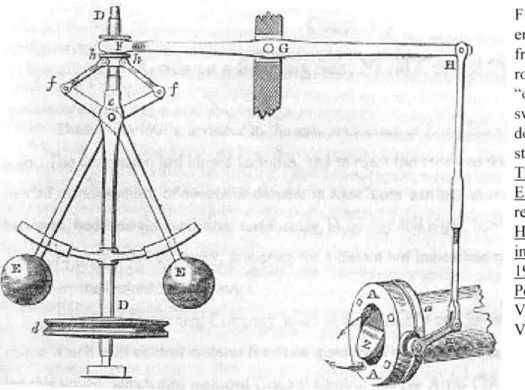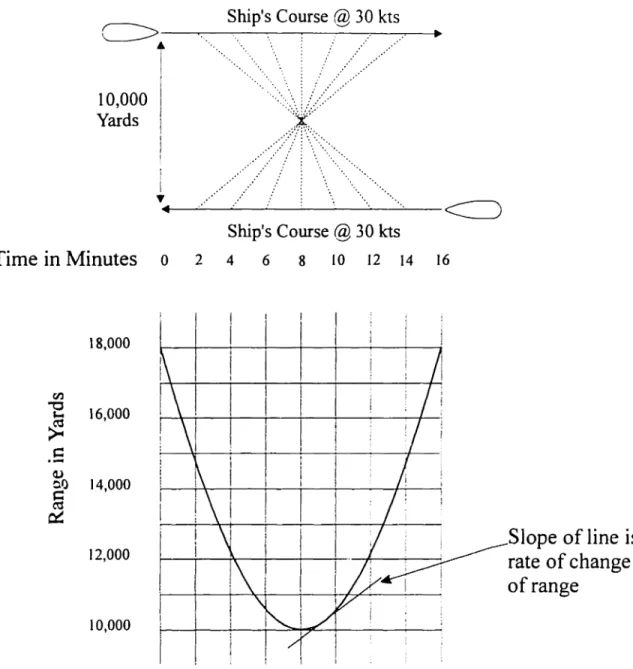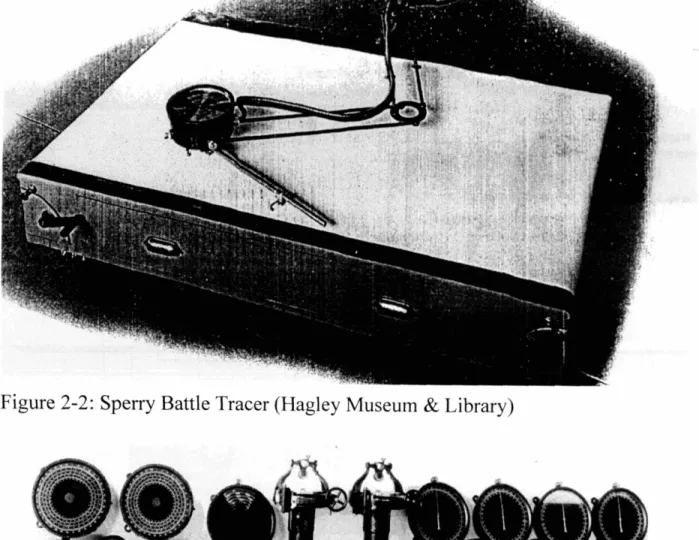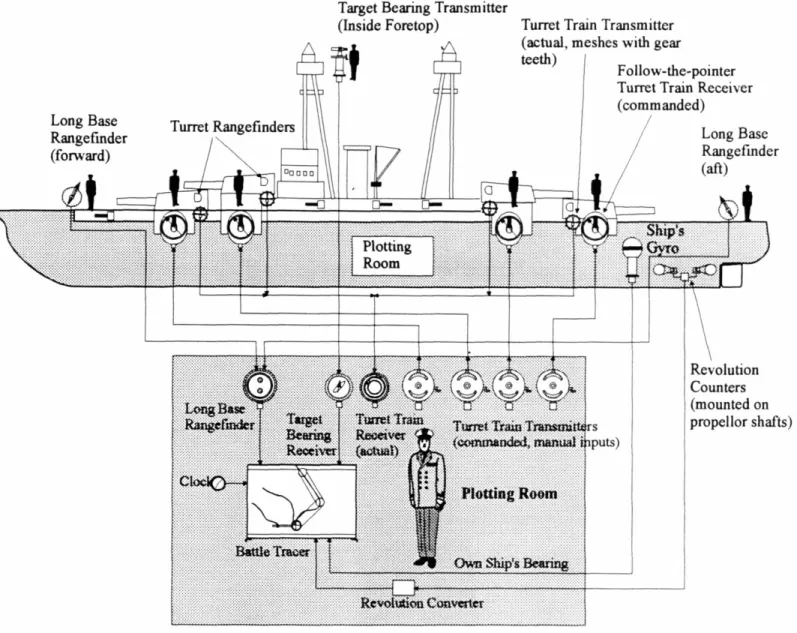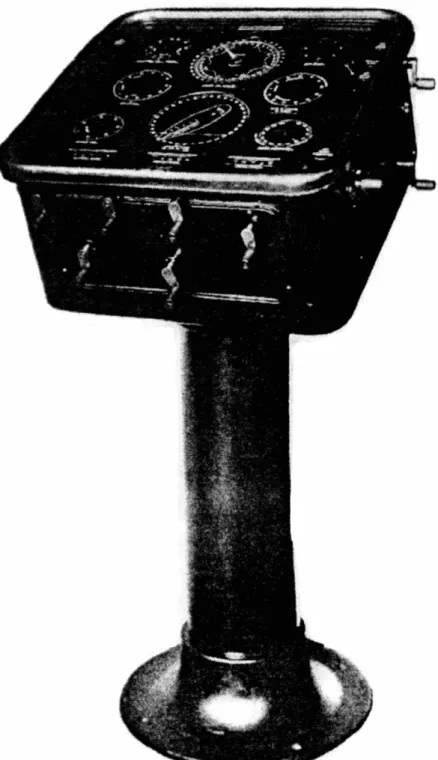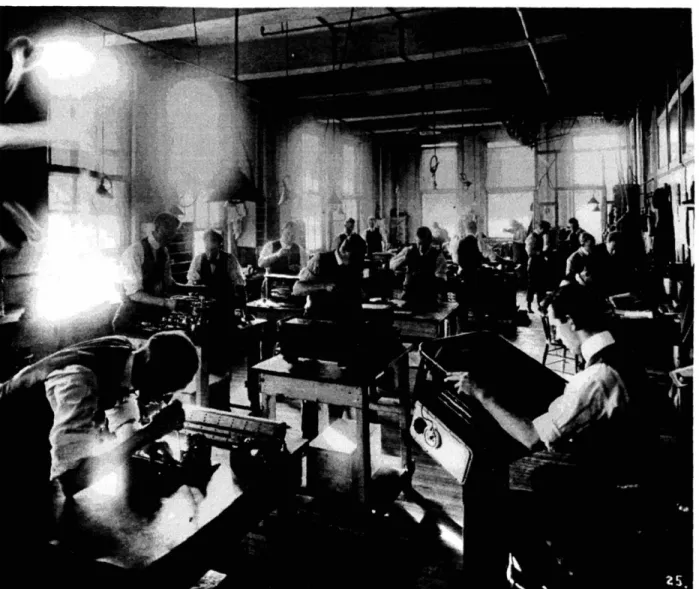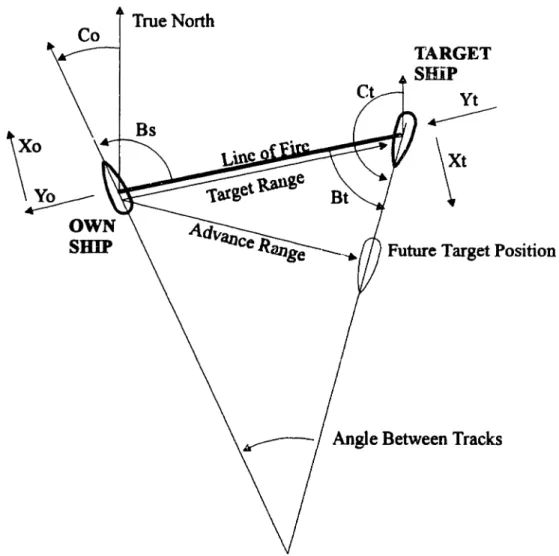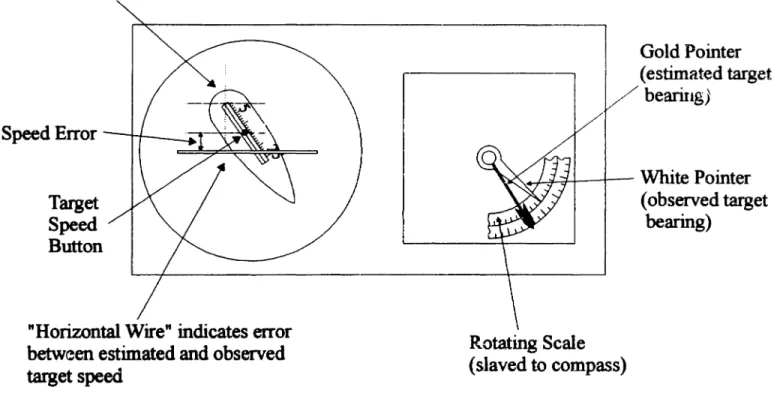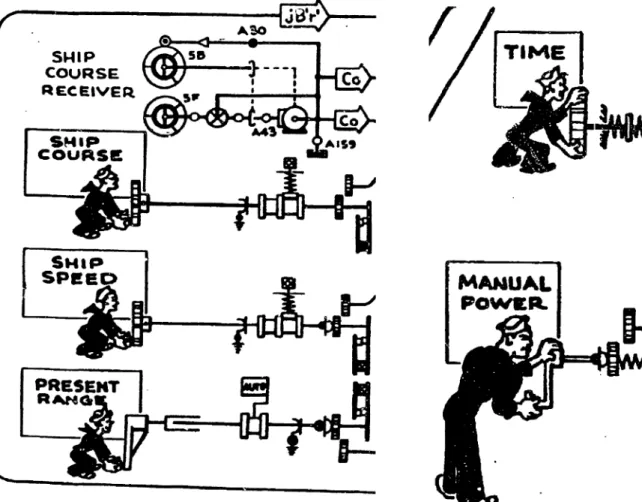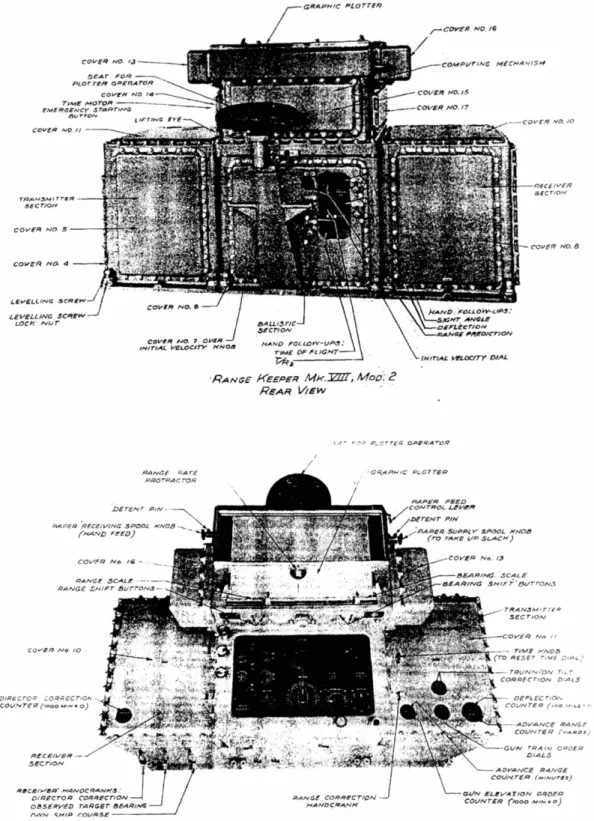!;IASSACHUSETTSINSTlrurt: OF TECHNCJLOGY
Mt~Y
0
7 1996
"Datum for its
Own
Annihilation:"
Feedback, Control, and Computing, 1916-1945
by
David A. Mindell
B.S. Electrical Engineering
B.A.
Literature
Yale University, 1988
Submitted to the Program in Science, Tecllllology, and Society in Partial Fulfillment of the Requirements for the Degree of
Doctor of Philosophy
in the History and Social Study of Science, Technology, and Society at the
Massachusetts Institute of Technology May, 1996 .,_
r
J u~-{, 1'1'1bJ
<0 1996 David A. Mindell. All rights Reserved.
The author hereby grants to MIT permission to reproduce and to distribute publicly paper and
electronic copies of this document in wholeorin part.
Signatureof Author ----4...,Qr---+-. ...,. .~~ T
David A. Mindell May 2,1996
Certified by: ---:::I,-....- _
:7
Merritt Roe SmithLeverettHowell and William King Cutten Prof~ssorof the Historyof Technology Thesis Supervisor Director, Program in Science, Technology, and Society
"Datum for its
Own
Annihilation:"
Feedback, Control, and Computing, 1916-1945
by
David
A.
Mindell
Submitted to the Program in Science, Technol(lgy, and Society
onMay 2, 1996in Partial Fulfillmentofthe Requirementsfor theDegree of
Doctorof Philosophy in the
Historyand Social Study of Science, Technology, and Society
ABSTRACT
The dissertation is examines how traditional governors and feedback devices becanle formally
integrated into engineering and how modem control theory emerged and contributed to computers and ideas of information. The first half of the study traces four separate threads
--~---~---between_~lSt16__.and__l.9A_O_:_~_fire__
contrClLin_the__
NayY_Bllr~u ofp~~tn~_~~_~d i!~_~QJ1~.!~c:!Qr~~(t~~.Ford Instrument Company, Arma, and General Electric); feedback engineering at the Sperry Company; communications engineeringand feedback amplifiers at Bell Telephone Laboratories; power system engineering and differential analyzers in the Electrical Engineering department of lvfIT- each worked withadistinct concept of "system," depending on their technical Cllld institutional goals. From these distinct ideas of systems flowed separate conceptions offeedbac~ stability, control, and the human role in operating technical systems.
The second part of the study begins in 1940and covers World War II. The National Defense Research Committee (NDRC), founded by Vannevar Bush in 1940, included a division devoted to fire control, Section D-2, later called Division 7. This committee subsumed much of the pre-war work in control systems and let contracts which developed a broad array of automatic controls, systems, and theory. These included directors, predictors, radar-controlled devices, and
psychological models of human operators. The NDRC's fire control work was supervised and coordinated by representativesfrom the four threads discussed above: the Navy, Bell Labs, Sperry, lvfIT, among others. Diverse notions of systems and control conflicted and fused amid the frenetic and creative atmosphere of wartime technology.
Several important contributors to early computing, including Jay Forrester, Norbert Wiener, ClaudeShannon, and George Stibitz, participatedin\"artime work on control systems. Their jdeas and experiencesgav~ rise, through varying routes, to the large command, controi, and information systems which characterized the era of nuclear standoffand remain in place today. The world these systems created, and their technological politics, contributed to the sense of
alienation and powerlessness from which gave rise to critiques of technological society. Thusthe
cultural dilemma of technology out of control responded to the pelVasiveness of technolOgies of
control.
Thesis Supenrisor: Merritt Roe Smith
Title: LeverettHoweU and William King Cutten Professor of the History ofTechnology Director, Programin Science, Technology, and Society, MlT
TABLE OF CONTENTS:
Prefaceand AckJlowledgments I••••• • 7
Source Abbreviations ,. ... 9
Author'sBiogI"'aphy... 10
Epigr-aphs ... ... 11 1. Introduction: Signof the Machine and Metaphor of Technology 13 2. Grids on ASwirlingSea: Naval Fire Control... 37
3. Taming the Beasts of the MachineAge: TheSperryCompany... 125
4. Feedback Amplifiers and Mixed Emotions atBell Telephone Laboratories... 179
5. "ArtificialRepresentation of Power Systems:" Controlat MIT inthe 1930s 245 6. Acquiring Control: The f'ire ControlDivisionsof the NDRC... 303
7. "Fire Control for the Masses" and the Servomechanisms Laboratory... 339
8. Closing the Loop: Radar and System Integration... 377
9. The T'Jrn to Information I... 431
10. Conclusion: "Datum for itsown Annihilation:" Feedback andInformation in 1945... 479
(Note: figures are included aftereachchapter)
PREFACE AND ACKNOWLEDGEMENTS:
As the child of a writer and an engineer, I came to this topic thrcugh a number of routes. Inmy work at Woods Hole Oceanographic Institution with manned submersibles with remote and autonomous robots, I began to see that "automation" was never as simple as replacing a human function withamachine. Unexpected benefits and disadvantages always became apparent after the fact. I've also always beenfascinated by the animism of things, especially machines. For me, the
thrillof engineering involved breathing spirit into dead matter, usually with feedback loops or
computers. Literature and mythology, from Pinocchio to Robocop, Joyce to Pyncho~ often articulates the issues at stake. I want to show similar forces at work in engineering practice. My study of literature sparked an interest in cultural criticism, but I've always fou;.d it frustrating: when cultural critics address technology, even military technology, they seem hesitant to go below thesurface, to study the creation of machines in concert with their representations. In
technological practice, however, I find a rich interplay of perception, language, and autonomy. The reader will note my deep debt to Thomas Pynchon and Gravity's Rainbow, the subject afmy undergraduate thesis. While Ido not discuss the book here, it lurks below the surface, and
certainly helpsframe my questions. Much of the control technology I discuss deals with ballistic trajectories; at one point even to counter the V-I and V-2 missiles. Hence, one might consider the subject "gravity's other rainbow."
As Bruno Latour points out, any seemingly pure space of knowledge is always defined and supported by an extensive social network. TheyearsI devoted to this study owe to a number of individuals and instittltions. Threeyearsof graduate school were supported by a gradu1!te
-- --- -fellowslUp--frollflhe-Natio-n-al-Sciena--Foundation~--l--conceptualized the dissertation on-an--extended teaching visit to the History of Science and Technology Department at the Royal Institute of Technology in Sweden. The trip gaveme ample time to think and read, as well as many valuable conversations with Svante Linquist and Mats Fridlund. Several archivists were particularly helpful in uncovering material: Helen Samuels, Elizabeth Hutchins and the staff at the
MlTArchives, Sheldon Hochheiser at the AT&T Archives, Michael Nash and Barbara Hall at the Hagley Museum and Library, and Marjory Ciarlante at the National Archives. The Dibner Fund and the KelleyFund generously supported travel for archival research. John Sumida allowed me to copy material from his personal library of fire control documents for Chapter 2. Ron Kline generously loaned me copies of archival material from AT&T. Paul Ceruzzi entrusted me with his
ryecopy of George Stibitz's memoir. The final year of writing was greatly enhanced by a graduatefellowship at the Dibner Institute for the History of Science and Technology, which provided financial support butmuch more: beautiful facilities, intere~;ted colleagues, and an environment most conducive to thinking and writing. I must also thank the STS Department at
MlT; its staff: especiallyJudith Stein, Graham Rumsay, Debbie Meinbresse, and Sarah Trautman, made five yearsofgraduate school a daily pleasure. No small number of colleagues have endured
Inyravings, read pieces of the draft, and pushed me to be clear. They include: Atsushi Akera, Ed Eigen, Robert Friedel, Rebecca Herzig, MichaelMahoney, Jennifer Mnookin, Bob Post, and John Sumida. My mentors, in theform afmythesis committee,. Tom Hughes, Leo Marx, Tom
Sheridan, Roe Smit~ and who, eachintheir ownway, through their work, their teaching, and their examples, shaped myfonnulation ofthis study and myidentity as a ocholar.
I IT',ust also acknowledge the memory of James Snead, my undergraduate mentor in literature, who first suggested I might be a humanist as well as an engineer, and 'who directed me to MIT. His tragic early death pains me often, but his voice echoes in my work. This study is partly in conversation with him.
My brother, Joe Mindell, has been aCOMdante and colleague for man.y, many years. In a sense, he will understand this work better than anyone. He and his wife, Ossie Borrosh, saw me through the
manystressful months of this work. Their wedding and subsequent move to Boston kept the absorption of dissertation writing from becoming isolating. They havetolerated my sometimes-dull single-mindedness on control systems with grace and humor.
This dissertation coincides with& happy period for my family; my brother's maturing as adoctor and a scientist, his wedding; the publication ofmymother's books and broad recognition of the
fruits of her manyyears' work; my fatherf
s moral guidance and his continued health. These are not coincidental: we owe much to mutual intellectual and emotional support (and a fair degree silliness). In that sense, this is a shared accomplishment.
Few graduate students have theluxuryof a skilled and experienced engineer and an
internationally-renowned writer, editor, and teacher on the other end ofa fax machine at 1 A.M. For that I thankmyfather, who nurtured mylove of machines, historical, contemporary, and imagined. What I hope is the clarity of writing in this work owes more to my mother, Dr. Phyllis Mindell, than to anyone else.
I dedicate this work to myparents, PhyUis and Marvir. Mindell. My first teachers, my first students, and my first colleagues.
SOURCE ABBREVIATIONS:
Abbreviations usedinnotes for archival material as follows:
ATI AT&l~Archives, Warren, NewJersey
EAS Elmer Ambrose Sperry Papers, Hagley Museum and Library, Wilmington, Delawa:-e
NWC Naval War College Library, Newport Rhode Island
NWP Norbert Wiener Papers, MIT Archives
OSRD Record Group 227, Office of Scientific Research and Development, National Archives --- --- ---and-Records-Administration,-€ollege-Park;--Maryland -- -
---OSRD7 Record Group 227, Division 7 Records
OSRD7 GP Record Group 221, Division 7 General Project Files (E-86)
RG-74 Record Group 74, U.S. Navy Bureau of Ordnance Records, National Archives and Records Administration, Suitland Maryland
SGC Sperry GyroscopeCompany Papers, Hagley Museum and Library, Wilmington, Delaware
Journals Abbreviated as Follows:
IFf Journal of the Franklin Institute
BLR Bell Laboratories Record
BSTJ Bell System Technical Journal
In notes for Chapters 6 through 9, names of D-2 andDivision 7members arebeabbreviated asinthe original memos:
eSD CharlesStarkDraper
DJS DuncanJ. Stewart
ElP EdwardJ. Poitras
GAP George A. Philbrick
GSB
GordonS.Brown
ffi..H Harold L. Hazen
lAG Ivan A. Getting
KTC Karl Taylor Compton
PRO Preston R. Bassett
SHC Samuel H. Caldwell
TCF Thornton C. Fry
WW Warren Weaver
NW Norbert Wiener
David A. MindtU grew up outside of Rochester, New York. He has undergraduate degrees in Literature and in Electrical Engineering, both from Yale University. Before coming to
rvnT
he worked as astaff engineer in the Deep Submergence Laboratory ofthe WoodsHoleOceanographic Institution. There he conducted research in distributed control systems for remotely-operatedand autonomousunderwater vehiclesfor expl,Jring thedeepest parts ofthe
ocean, and participated in more than a dozenoceanographic cruises. He developed the control
system andpilot interface for Woods Hole'sJASON vehicle, and has also consulted on
engineeringaud policy for a number ofindustrial and research organizations (including the
National Research Council). He invented a high-precision sonar navigation systems for closed-loop control ofundersea robots invery deep water, called EXACT and licensed it to a company for saleand manufacture. In 1991 heentered the doctoral program in the Program in Science,
Technology, and Society at WT. From 1992-9~he was a National ScienceFoundationGraduate
Fellow, from 1995-96 he was a fellow at the Dibner Institutefor the History ofScience and
Technologyat MIT. Hisresearch interests include technology policy (historical and current), the history of automation in the military, the history ofelectronics and computing, and cultural studies of technology. OnJuly 1, 1996, becomes the Fra..'1ces and David Dibner Assistant Professor of the
History of Engineering and Manufacturingin th·~ Program in Science, Technology, and Society at
WT.
If you want the truth - I know I presume - you must look into the technology of these matiers. Even into the hearts ofcerta'nmolecules - it is they after all which dictate temperatures,
pressures, rates of flow, costs, profits, the shapes of towers...
You must ask two questions. First what is the real nature of synthesis? And then: What is the real nature of control?
Ghost of Walter Rathenau to the Nazi elite,
Thomas Pynchon., Gravity's Rainbow
People 'track' during everyconscious moment...alignmentproce~ses, in which the alignment error serves as datum for its own annihilation, are forever being carried out in the familiar operations of
living...The needs and nature of the interpretive and computing equipment cannot finallybe separated from those of tracking controls.
George Philbrick, 1945
Chapter 1
Introduction
Sign of the Machine and Metaphor of Technology
Lewis Mumford erred when he rejected the stearn engine in favor of the clock as the "outstandingfact andtypicaisymbol of the modem industrial age."l The governor integrates the two, making the stearn engine a powerful clock, harnessing power with precision. It works like a coxswain, directing both the crew and the boat, commanding the rowers to stroke in synchrony andthe vessel to hold its course. Without synchronization each oar pushes alone, its power wandering aimless. The coxswain obselVes the course and makes corrections, shouts commands, integrates individual rowers, and links them, united, to the vessel. Through perception and speech the coxswain makes a machine. The Greeks called the actionJcubernan, \vhich in Latin became
gubernatorand came to English asgovernor.2
Like a superego(Jfthe machine, the governor coxswains the stearn en~ine. [*Figure 1-1: Stearn Engine Governor] Two rotating balls monitor the speed, spinning faster and moving outward with centrifljgal force. If the engine goes too fast, the balls swing out, and through a linkage (a channel of communic:ation) operate a valve which reduces the steam into the cylinder. The faster the machine goes, the more the governor slowsit down - negative feedback. If the engine runs too slow, the balls drop in and allow more stearn into the cylinder, speedingit up. Ideally, the machine and the governor reach equilibrium, balance, stability. Unregulated, the engine loses speed with an increase in load. Regulated, it maintains a constant speed, regardless of load (or variations in stearn pressure). Through feedback the governor speaks, transmitting low-power information to enlist the high-low-power machine in its own regulation, rendering it automatic.
",
This study examines the governor and its transformationsin the twentieth century. Like the coxswain, the governor works as an observer, as a speaker, as an integrator. It integrates
I LewisMumfor~ TechnicsandCivilization (NewYork:Harcourt..Brace&;Jovanovich, 1934), 14. Mumford's
bookmakes no mention of governors or regulators. His "oeoteebnic" phase oftechnology is one of electricity and
light, not of control or information.
2TheOxford Englisb Dictionary liststhefirst d-mnitiooof"governor" as "A steersman, pilot, captain of a vessel."
Definition number eight reads "a self-acting contrivance for regulatingthesupplyofgas,~water,etc...toa
machinetoensure an evenandregularmotion."
disparate elements, and also integrates mathematically, adding and averaging over time (frequently a human operator, like the coxswai~ performsthis function). It translates perception to
articulation. Perception refers to how the governor apprehends and absorbs the world, from telescopes to radars. Articulation refers to speech oranycomplex, jointed output, particularly moving machinery (an articulated crane, for example, concatenates segments like words
concatenate syllables). Technologies of controlaid and automate each of these functions, enhancing perception, amplifying art.'-·uJation, tightening integration.
Norbert Wiener derivedcybe'j, ..~!ics from the CJTeek word for steersman.3The astonishing resonance of the prefixcyber-in today's technological vernacular reminds us that governance remains a central issue in the public imagination. of technology, both as a sign and as a metaphor. As a sign, it stands for harnessing machines to individual intentions. For example, in recent
decades most increases incomputing speed have gone to serve the "user interface" in a concerted effort, stillonly partially successful, to couplethe power of the knachine to human intentions. As a metaphor, governance symbolizes technology as a force that itself needs harnessing. One question continues to dog our seemingly endless progress: is technology out of control?
I use "control" to refer simultaneously to these two senses of governance: the sign of the machine and the metaphor of technology.4The trouble is, we have no map of this varied and complicated representation. Controls are things (rudders, buttons, keyboards, steering wheels) and we each experience the complexities ofmact-ine control (training, skill, augmentation.. automation, loss of control). Technology is an idea, and we share notions of its dynamics (construction, autonomy, conspiracy, systems). Yet we lack a conceptual chain to link
technologies ofcontroltothe control of technology.S Until now, the jump from a machine to The
Machine has largely been a leap offaith. This study remakes that leap as a trajectory, a history.
JNor:bert Wiener, Cybernetics:OrControl and Communication in the Animal and the Machine (Cambridge: MIT Press, 1948), 11-12.
4Controlis preferable to governance because the latter has become slightly archaic. Control, in additiontoits
political and psychological dimensions, finds broad application in technology and represents a genuine
subspecialty in engineering (inf~partof thisstudy tracesa conceptual shift fromregulation tocontrolin
feedback technology).
5One might arguethat theseconnections are merely semantic, a linguistic coincidence that the same word,
____________________ conlrol,Jindscurrencyjnboth engineering and socialdiscourse. Contralisno isolated case; it actually represents a broadcoDvergence.Thetechnical language of controlsystemsis full of words laden with political meaning, including governor, stability, servo (meaning slave), and system, suggesting the connections are more than coincidental. The most strikingaspectof the discourse of control is notthatthose discussing the control of
In this century, that history concerns not only control engineering, but also the stability of large technical systems, the secrets of military control, and the profound and gradual shifts from mechanical to electrical computers, fromcontinuous to symbolic representation, from analog to
digital electronics. R&D superseded invention, systems eclipsed apparatus, perception replaced force. The governor transformed from the simple regulator to the general infonnation processing system, the computer.
Historical Work on ControlSystems
For pre-twentieth century technology, Otto Mayr's work on feedback devices uniquely attempts to link governors to governance. He approaches the subjectas "a case study in the intellectual history of technology," and explores the technological background and cultural
resonanceof the feedback loop before the nineteenth century. He aims "to reconstruct an instance of interaction between and society's practical technology and its intellectual and spiritual
culture.,,6
Beginning with the preoccupation with clocks and automata in the sixteenth and seventeenth centuries, Mayr traces mechanical trends parallel with the scientific revolution and mechanistic philosophy of the "world machine." Leibniz, Descartes, and Boyle used clocks to demonstrate analogy between machines and the cosmos; the clockmaker's craft contributed to the production of scientific instruments. According toMayr, the clock epitomized mechanical
philosophy because "the systemhas a centralistic command structure; the original design,
continuing functioning, and ultimate survival of the whole system depend ultimately upon a single authority... No dialogue was possible between the center and the lower branches; the flow of communication was one way - downward." Thus the clock had no feedbac~ it wasfully
deterministic (inmodem parlance, open-loop) in what Mayr calls "the authoritarian conception of order." It is as though the coxswain were replaced by a phonograph, an automaton which shouted orders to the crew and manipulated the rudder on a preset mechanized schedule (programmed by a geographical map). Automata, which derived both from clocks and from mechanical
astronomical simulacra, embodied this top-down direction: observation and perception did not
technologyspeakin technical terms, but ratherthatthose who designtechnologies ofcontrolspeakinlanguage so
overtlypolitical.
6Otto Mayr,Liberty,Authority,andMachineryinEarlyModemEurope (Baltimore: Johns Hopkins University
Press, 1986), xvii, 1.
contribute to the system, which integrated its elements solely bymechanic~ structure and notby
feedback or communication.7
Mayr argues the British rejected the clockwork universe in the eighteenth century in favor ofa liberalvision ofbalanceandself-regulation.!In 1776, Adam Smith'sWealth of Nations built on David Hume's critique of mercantilism to elaborate the economic implications of
self-regulation. Smith applied it three phenomena: the distribution of compensation for various
occupations, the size ofa nation's working population, and supply and demand. The substance of Smith's arguments were not new. His predecessors had explored all three, but not as
self-regulating systems; Smith explored the idea in detail, speculating about both static and dynamic behavior.9Mayrattributes Smith's vision to a "liberal conception of order" which flows from balance and self-regulation. Liberal order still involves hierarchy, but a structure built on balance and not centralized control. "Thus it is possible to envision the entire universe as a network of superimposed and interacting self-regulating systems, maintaining themselves and the world permanently - despite occasional lapses - in some sort ofdynamicequilibrium."10
Similarly self-regulating (although in J\ttayr's scheme, more authoritarian), Foucault's '\:lisciplinary society" also emerged in the late eighteenth century. The icon here is no machine but Jeremy Bentham's panoptic prison. Inmates, with the omnipresent possibility of the guards' vision upon them, became self-regulating like machines; they behaved like proper prisoners because they knew they were under surveillance. Foucault sees the panopticon not just as a building but as "a type of location of bodies in space, of distribution of individuals in relation to one another." This "political technology" made the hierarchy self-governing, it allowed traditional methods of control to throw off the limitations of the physical world and vastly increase their potency. Technical arlvances freqllently address the "weight" of the governor's functions, how much force, mass, and
7Mayr, Liberty, Authority, and MachineI)',39, 118,69, 120. Also see Silvio A. Bedini, "The Role of Automata in
the History of Technology," Technology and Culture5(no. 1, Winter, (964),24-42 and DerekJ. De Solla Price, "Automata and theOriginsof Mechanism and the Mechanistic Philosophy," Technology and Culture 5 (no. I, Winter, 1964),9-23. Price (22) writes,"Bythe time ofShakespeare,man's ancient dream of simulating the
cosmos, celestialandmundane, badbeenvividlyrecaptured and realized through the fruition of many
technological crafts, including that of the clockmaker, called into being in thefirstplacebythis lustforautomata."
Also see Bruce Mazlish, The FourthDiscontinuity(NewHaven: Yale UniversityPress, 1993), Chapter 3.
8OttoMayr,"Adam Smith and the Concept of the Feedback System.'" Technology and Culture 11 (no. 1, 1971), 3.
9Mayr, "AdamSmi~'"11-12.
10Mayr, Liberty, Authority, and Machinery, 187.
energy they require. This study analyzes how control systems connect people, machines, systems. "Speed," expresses the varying weights of those connections.II
I base my reading of Foucault, especially the emphasis on the visible, the articulable, and their integration, on Gille Deleuze's essay "A New Cartograptler.-"-ForDeleuze, the disciplinary society emerged when vision and articulation separated as two discrete forms of the realization of power. His distillation of Foucault, that"Allknowledge runs from a visible element to an
articulable one, and vice versa" echoes the translation perfonned by the governor. At the core of this translation lurks control, which makes the system mure than the sum of its parts. Extend this assemblage to a broad geography, connected by wires or networks, and it resembles a
technological system,"thediagram is no longer an auditory or visual archive but a map, a cartographythatis coextensive with the whole social field. It is an abstract machine.nl2
The mechanical governor appeared simultaneously with Smith's liberal balance and the disciplinary society. Feedback devices had been invented at least as far back as ancient Greece, including water level cut-offs (asina modem toilet tank), pressure valves, and
constant-temperature furnaces.i3 The centrifugal flyball governor for steam engines, however, became the first feedback mechanism to be widely employed by technologists and to enter the popular
imagination. That device appeared in 1788, only twelve years after The Wealth of Nations, and it was invented by a friend of Adam Smith, James Watt. Well into the twentieth century, one expert estimated that ninety percent of the governors in existence were of the centrifugal type derived from Watt's invention.14Mayr attempts to connect Smith's model of the economy as a feedback system to Watt's governor, but Watt himself did not conceptualize his device as a feedback mechanism or a self-regulating system (although those who later improved the device did). Moreover, sinceonlycircumstantial evidence connects the governor to Smith's work on supply II Michel Foucault, Discipline and Punish,trans. Alan Sheridan(NewYork: PantheonBooks, (977),205, also see Idem., The BirthorThe Clinic, trans. A.M. Sheridan Smith(NewYork: Vintage, (973), Chapter 7, "Seeing and
Knowing."
12Gilles Deleuze, "A New Cartographer," in, Gille Deleuze, Foucaulttrans.SeanHand (Minneapolis: University
of Minnesota Press, 1988), 23-44. Also see~'Micropolitics and Segmentarity," in GillesDeleuzeand Felix Guattari, A Thousand Plateaus,trans.Paul Bove (Minneapolis: University of Minnesota Press, 1983),208-31, which explicitly incorporates Foucault's disciplinary society into a discussion of connections and nodes in political
systems.Deleuze wrote of the transition from a disciplinarysociety to"societies on control," andtheerosion of
institutional pillars of the former (schools, churches, prisons) in favor of ubiquitous ceding and the corporation, "PostscriptontheSocieties ofControl," October S9 (1992), 3-7.
13OttoMayr,TheOrigins of Feedback Control (Cambridge: MIT Press, 1970).
14W. Trinks, Governors and the GoverningorPrime Movers(NewYork: Van Nostrand andCo., 1919),3.
and demand, Mayr is content to outline the affinity of their tracks. Still, he lays out early parallels
betweenthe trajectoriesof the stearnregulatorand the self-regulatingeconomy, governors and governance.
At least oneotherBritishphilosopher madesimilar connections: CharlesBabbage.
Historians usually refer toBabbageonlyasthe inventor of the "DifferenceEngine," and
"Analytical Engine," unrealized early computers. Simon Schaffer, in contrast, argues Babbage's
industrial philosophy (expressed in his 1832Report on Machinery and Manufactures) intimately
related to his calculating machines Gust asShapin and Shafferarguedfor attention to Hobbes's
science and Boyle's politics). Like Bentham, Schafferargues, Babbage saw his technology as a miniature field ofvisibilityandcontrol,"amanufactoryofnumbers.n "The replacement of
individual human intelligence by machine intelligence," writes Shaffer, "was asapparent inthe
workshopasin theengines." But therewas a catch. Machinesdeskilled workers while defining human operators as intelligent and non-mechanical, "an unresolved contradiction between stress on the subordination and thus mechanization of workers' intelligence and on the coordination and
thuscerebration of their labor."IS Putanotherway, in a system, did people form the unreliable
"weak links," or thinking, judging "strong links"?
For thetwentieth century, few have connected governorstogovernance. StuartBennett's
two volume work, addressing 1800-1930and 1930-1955, examines the history of control
engineering.16Hisinternal accounts leave it "toothersto delve into thecomplex relationships
between the technology and its social and economic consequences" by which he means
"unemployment, economic growth, removal of degrading and onerous work, and de-skilling."17 His secondvolumefollows three "areas" ofcontrol technology betweenthe world wars. These
---_..._---_._--_._---_._._----_.__ ._---_..
_.-areas, process control, electronic negative feedback amplifiers, and selVomechaOism-s,
fonne-d-the
basis of "classical" control theory, the set of techniques that dominated control engineering until the 1960s.
ISSimon Schaffer, "Babbage's Intelligence: Caluclating Engines andtheFactorySystem," Critica1lnguiry21
(Autumn, 1994),222. For BoyleandHobbes, see Steven ShapinandSimon Schaffer, Leviathan and the Air PumP:
Hobbes, Boyle,andthe Experimental Life (Cambridge:HarvardUniversity Press, 1985).
16StuartBenne~ AHistoryof Control Engineerin& 1800-1930 (London: Peter Peregrinus, 1979). StuartBenne~
AHistory of Control Engineering, 1930-1955(London: Peter Peregrinus, (993).
17Bennett,AHistory ofControlEngineering,1930-1960,viii.
Like Bennett, I follow separate threads between the wars, showing how they developed separately and grew together during the early 1940s. In contrast to Bennett, however, I examine control technology along axes defined by Mayr, Foucault, and Shaffer through their readings of Smit~Bentham, and Babbage: as "a conception of order," as a discipline (both epistemological and professional), and as a technology of visibility and articulation. Hence my threads correspond not to technical fields but to institutions. Laboratories, committees, and military-industrial
alliances represented innovationsillthe conduct of technical work; they shaped approaches to problems (indeed defined the problems) and established conditions of knowledge production and authority. The organizational shifts are hardly separable from technical inventions. Where Bennett shows a unified methodology of control engineering emerging from the pressure of war, I look critically at the emergence of computers, infonnation systems, and system engineering, for how they carried the legacies of earlier threads and the scars of their collisions. Throughout these multiple paths, however, runs the common theme of systems.
Systems
Systemsinmany respects resemble machines.A machine is a little system,createdto
perfo~as well astoconnect together, inreality,thosedifferent movementsandeffects whichthe artist has occasion for. Asystemisanimaginarymachineinventedtoconnect togetherinthefancythose different movements and effects which are alreadyinreality performed.
Adam Smith.IS
Alfred Chandler brings the coxswain and governor into the world of industrial systems when he observes "the railroad and the telegraph marched across the continent in unison.n The
low-power telegraph regulates and coordinates the high-power railroad. Power means moving trains along the rails, but control means moving them where you want them and when: power with precision. Chandler persuasively argues the alliance between infonnation transmission and physical power, his oft-repeated "coordination and control," layat the heart of industrialization in America. Managerial control marched in unisonwith industrial capitalism. Management
techniques, organizational forms, and data processing machines steered and synchronized the
18AdamSmi~ "Principles WhichLeadandDirectPhilosophical Enquiries, IllustratedbytheHistoryof
Astronomy,"inAdam Smith, Works, ed. Dugald Stewart(London.. 1811), 5:55-90. Quoted fromMayrt"Adam
Smith," 17.
economic vessel as the coxswain steered and synchronized his rowers.19Professional managers acted to ensure stability, favoring long-term expansion over~jhort-termprofits. They tried also to maketheir systems "self sustaining," able to survive and operate independent of outside
connect~ons. They observed the system, collected data on performance, then tweaked the
parameters accordingly, "for the middle and top managers, control though statistics quickly became a science and an art.,,20 Feedback about the performance ofan industrial system became essential fer making it run efficiently, indeed for making it run atall. An ideology developed that managers could make human organizations as precisely as engineers made machines, echoing Smith's observation that a system is an imaginary machine.
Imaginary machines became real through writing. Orders, procedures, documents, and policies became the linguistic instruments of an increasingly rationalized management structure, relying heavily on internal communications. "Oral exchanges, whether face-ta-face or by
telephone, were idiosyncratic, often inexact, and undocumented. The ideology of systematic management demanded increasing written communication to provide consistency, exactness, and documentation" writes JoAnne Yates. Managers employed writing for perception, sending feedback up the hierarchy in the form of charts, tables, forms and reports. DOWTi the ladder went articulation: announcements, circular letters, manuals, and company magazines. Gradually, managers mechanized and then automated these activities. Vertical filing, carbon paper,
mimeographs, and the typewriter carried linguistic traffic while adding machines, punched card tabulators, and cash registers ran the numbers.21
191nChandler's view, management in American business arose from a problem ofmachine control.Railroadlines
got so long (150 miles)thatthey grewbeyond the power of an individual to keep the trains fromcolliding,and cooperative management procedures were created to coordinate rail traffic. In effect, Chandler's managerial controlsaroseto bead off instability(characterizedbyaccidents) in tbe railnetwork. AlfredD. Chandler, The Visible Hand: TheManagerial Resolution in American Business (Cambridge, Mass.: Bellknap Press, 1977). Also see JoAnne Yates, Control Through Communication:TheRise of System in American MaruJgement (Baltimore, Johns Hopkins UniversityPress, 1989) for connection betweendataprocessing technology and management technique. James W. Cortada, Before the Computer: ffiM, NCR. Burroughs and Remington Rand and the IndustJy They Created. 1865-1956. (Princeton:PrincetonUnversity Press, 1993). James BeDiger,The Control Revolution (Cambrdige:HarvardUniversityPress, 1986). SeeWilliam Cronon, Nature's Metropolis(NewYork: W.W. Norton and Co.• 1991) for an account of nioeteenth-ceotwy industrialization which discusses the relationships between technical systemsandnatural geography.
20Chandler,TheVisibleHand. 10, 159, 109.
21 JoAnne Yates9Control Through Communication: The Rise of System in American Management (Baltimore,
Johns flopkins University Press, 1989) 65-94. James W. Conada,Beforethe Computer: IBM. NCR, Burroughs and Remington RandandtheIndustryTheyCreated, 1865-1956. (Princeton: Princeton UnversityPress, 1993). James Beniger,TheControl Revolution (Cambridge:HarvardUniversityPress, 1986).
These methods were not limited to commercial organizations or imaginary machines. Technical systems, especially electrical ones (but also railroads, steamships, weapons) continued to require hanlessing as well. Like Mayr's notion of liberal order or Foucault's disciplinary
society, eachcontained numerous small governors, themselves feedback devices regulating a local parameter and transmitting up the hierarchy. For example, governors in electric power systems maintainedthe speed ofturbinesandgenerators, criticaltomaintainingthe consistent frequen~y of
alternating current, andvoltage regulators maintained stablepower levels. Thesystemdid not
distinguishbetween"imaginary machines" and metal machines. Linking technical governance to Chandler's managerial control, Thomas P. Hughes has shown how technical managers ("systelns builders") conceived their systemsas seamlesswebs which included social, political, and
economic factorsintheir constructionand operation.22
This study, in a similar vein, uses the idea ofsystemto linkthe machine to The Machine. This isahistory of control systems, with all the complexity and diversity that follows fromthe idea of "system." While including aspects of control theory and control engineering, the term "control systems" also suggests a concrete, artifactual approach, encompassing the development of particular technologies.23 This strategy, in effect, connects Hughes's work on Elmer Sperry with his work on electric power: I explore the confluence of feedback control withlarge technical systems. Theengineand theclock survive in the dual imperatives of stability and synchroruzation. MilitaryCommand
One further ingredient completes this frame: military command. Military organizations have always stressed order, discipline, and hierarchy. Thewords "command and control" became linked in the 19505to describe the military's simultaneous direction of people and machinery. In
fact, the work of the governor - observation, communication, and integration - also describes the work of the commander. Like managerial control in industry, modem military command emerged in the nineteenth century when general staffs arose to administer armies, driven in part by
22Thomas P. Hughes, "The Evolution of Large Technological Systems" in Wiebe E. Biijker, Thomas P. Hughes,
and Trevor Pinch eds.,The Social Construction o/Technological Systems(Cambridge: lvIITPress, 1981),54. For
theconnectionsbetweeDHughes and Chandler, see David Houndshell, "HughesianHistory of Technologyand Cbandlerian Business History: Parallels, Departures,andCritics,"Historyand Technology 12 (1995) 205-224.
23Contra/theoryreferstoabodyofmathematical conceptsthatquantitatively describe thebehaviorof dynamic
systems. Control engineeringi~practiceandtechniquethatemploys control theory to design such systems,
telegraphs and railroads. This match could be problematic: coupling command to systenls imposed the constraints of machinery on otherwise flexible human organizations with potentially disastrous results. In 1914, for example, the Gennan military, designed to march into action with clock-like
precisio~ proved unstoppable and inflexible once set in motion, an early example of "technology
out of control.,,24
Military systems__ when they work well, resemble Mayr's liberal order more than the strict authoritarian order; military command does not necessarily imply rigid mechanical hierarchy. The chaos of battle always threatens communicating links. Ideally, commanders coordinate
independent units capable of autonomous operation.2' Historically, military control did not proceed by ever increasing automation, building ever higher degrees of rigidly centralized authority. Rather, it maintained a delicate balance of independence and autonomy in operating forces, from the level of systems down to individual soldiers. The militarist may dream of total control, but experience suggests flexibility.
"Seamlesswebs" always have points offrietion, vulnerabilities, and margins. At its furthest extension, the system faces its limitations and its impotence. A military-logistics system reaches them at the front, the point of contact with the enemy, what John Keegan calls "the face of battle.,,26 Technical systems have another margin in the command center, at the human operator. Here machines meet people across an anxious and unsteady boundary, the control system, the face of technology. The history of control shows systems constantly trying to extend and envelop these margins, to bring the outside inside.27They fail by definition.
including the professional development of a discipline of control engineering,withitsown joumals, professional
societies,andcareertracks.
24Arden Bucholz, "Armies,Railroads, andInfonnatio~theBirth oflndustriaJ Mass War," in Jane Sununertoned.,
Changing Large TechnicalSystems(Boulder, Colo.: Westview Press, (994).Also see Stephen Kern, TheCulture
of Time and Space (Cambridge: Harvard University Press, 1983), Chap. 10, "Temporality of theJulyCrisis."
25Martinvan Creveld,Commandin War (Harvard University Press: (985).
26John Keegan, The Face of Battle. For Keegan, the"face"hastwo meanings: the point at which anannyfaces its
enemy,and theindividual human experience of warfare.
27 Deleuze and Guattaricallthisoutside,cthewar machine," the figure whichconstantlyescapes inclusionby
proliferating networks. See "Treatise on Nomadology - theWar Machine," in A Thousand Plateaus, 351-423.
"Thewar machine's form of exteriority is such that it exists onlyin itsown metamorphoses; it exists in an
industrial innovation as weU asina~hnologicalinvention, in a commercial circuit as well asina religious
creation,inallflowsandcurrentsthatonly secondarily allow themselvestobe appropriatedbythestate.t~Nottobe
confusedwithmilitarytechnologyingeneral, or machines oewar, "war machines" appearin thisstudyin several
fonns: Kamikazes, parasitic noise, unstable human behavior in machine operations. Each threaten technologies of
control, which respondbyincreasingtheirextensionandcomplexity. See Michej Serres, TheParasite, trans.
Lawrence R Schehr(Baltimore: Johns Hopkins UniversityPress, 1982) for a discussion of noise, anti-infonnation,
After World War D, a constellation of techniques - Systems Engineering, Systems Analysis, Systems Dynamics, Operations Research and Cybernetics - sought to extend systems around various margins and to apply the war's engineering rationality to a broad range of problems. Historians are only beginning to chronicle the colonization of other disciplines bythe
systems constellation during the lastfifty years.28In that story, the discipline of the history of technology may itself be the last chapter. Hughes himself avoids the pitfall, insisting only on consideration of technical and non technical components as part of the historyof systems. Some, however, take up his "systems approach" as a means for making "systematic" the history of technology, "developing a systems approach to the social and historical study of technology as a strategy for integrating the history of technology into the social sciences.,,29I reject such attempts at rationalization; history flattens when designed like a machine; "system" has no stable, ahistoric essence. Most important, I avoid a systematic history because this study chronicles the very growth of the systems consteUation in engineering, and its accompanying abstraction of
technologies and people. Within engineering the concept of "system" has various meanings, and this study examines how it developed differently in a number of discrete environments. To attempt such a project from within the critical framework of a systematized historical approach would be merely self-justifying, and would choke on its own tail.
The brightest star (or at least the loudest) in the systems constellation was Norbert
Wiener's cybernetics, a vision whose impact was exceeded only by its ambition. Despite its
currency, we have little historical understandi~g of cybernetics. Wiener's seminal 1948 book
Cyberneticssuggests that the engineering of human/machineboundarif~s err.erged whole, Athena-like, from the heads of Wiener and his colleagues. "Ithinkthat I can claim credit," he wrote in his memoirs, "for transferring the whole theory of the servomechanism bodily to communication
as a kind of war machine. Thestateappropriates the"warmachine," in the fonn of a military; discipline and
hierarchyharnessanddirect it outward, acrossgeographyandtoward the enemy, anxiously preventing the war
machine from turninginODthe state.See William McNeill, ThePursuitof Power:Technology.ArmedForce,and Society Since A.D. 1000 (Chicago: University of Chicago Press, 1982) for anC\CCOUDtof the tense relationship betweenstatesand military force, and technology's role as a mediator between the two. Also see Manuel DeLanda, Warinthe Age of Intelligent Machines(NewYork: ZoneBooks, 1991)tora "Deleuzian." reading ofmilitaIy technology. DeLanda primarily translates existing histories (including McNeill's) into Deleuzian tenns. Ideas like thewarmachine, however, prove most valuable when they point to new and unexplored areas of research.
28See, for example, Lily Kay, Woo WrotetheBook of Life? (forthcoming).
29SvanteBeckman,"OnSystemicTechnology," inJaneSwnmerton00.,ChangingLargeTechnicalSystems
(Boulder, Colo.: WestviewPress, 1994), 311.
engineering.,,30 Wiener rarely cited any work on feedback between James Clerk Maxwell's 1867 paper"OnGovernors" andtheend ofWorld War II, despitethe maturingofmultiple, layered traditions of control engineering during the period.
What was genuinely new about the human/machine relationship articulated by cybernetics? How did cybernetics affect engineering practice? What was the legacy of cybernetics? How did it relate to the other stars in the constellation? Answering these questions, or even posing them, requiresa historical understanding ofcyberneticsandthe entire systems constellation, including their relationship to automation, to military command, and to the history of computing.
These topics havebeen obscured,at least in part, behind thethick veil ofmilitary secrecy. It is no coincidence that the man who went down as the founding father of cybernetics, Norbe'rt Wiener, renounced secret work after (and even during) World War
n.
Others did not have the freedom to appeal to popular imagination. The technology of "fire control," which led Wiener to his insights, was among the most secret technologies in the Amenc·an arsenal. The records of Wiener's sponsor, theNational Defense ResearchCommittee (NDRC), were declassifiedonly inthe 1970s. Bythen, many participantshad writtentheir memoirs andseveral historians had produced authoritative accounts. Wiener worked on two of eighty projects in control funded by this group. Others addressed infonnation theory, classical feedback control, human factors engineering, and digital computing. Similarly, the Naval Bureau of Ordnance, which oversaw fire control between the World Wars, released its pre-1925 records to the National Archives only two years ago. Later records remain innavyhands. In addition to the sources, secrecy materially affected the history asit unfolded, sometimes providing engineers extraordinary creative freedom behind its walls, other times breeding isolation and stagnation. Once removed, these walls prove a boon for the historian. Correspondents spokefrankly when federal law protected their
confidentiality. Classified documents were tracked with precision as they proliferated, allowing a detailed reconstruction of diffUsing ideas and technology.
World War II transformed the governor: radar automated perception, servomechanisms amplified articulation, and computers integrated systems. Seeing these technologies in this light begins to answer further questions: How did control and communication come together, and what
JONorbert Wiener, IAma Mathematician: The Later Life of aProdigy, (Cambridge: MIT Press, 1956), 265. Also
see Cybernetics: or ControlandCommunication in theAnimalandtheMachine, (Cambridge: MIT Press, 1948), 8
for a similar account and a similarclaim.
was Wiener's role in the match? What drove the growth of engineering systems? How did automation change in World WarII? What initiated the change? What role did feedback control play in the emergence of computers and information systems? What became of the COOllnon threads of perception, articulation, and integration?
Four Threads aod Previous Science
The social context of a science is rarely made up of a context; it is most of the time made up of apreviousscience.
Bruno Latow31
To answer these questions, this dissertation chronicles a period of both technical and institutional change, the history of control systems in the United States from 1916-1945. The complex and continuous nature of the process makes the choice of beginning and ending somewhat arbitrary. Starting with the battle of Jutland, which in 1916demonstrated the
inadequacy of Britishfire control systems, control engineering became part of formal engineering, and produced control systems of increasing performance and delicacy. This period culminates in
1945, with the end of World War II and the emergence of the general-purpose digital computer. This ending, however, was itself the start of yet another period in American technology which saw dramatic developments in control systems, computers, and the role of technology in political and cultural life in America.
Thefirst part of this study follows four discrete traditions, or threads, of technological practice during the interwar period. These traditions consist of different types of institutions, each with its own culture and technical environment, each with different controls of technology. Each worked with a distinct concept of usystem," depending on technology and institutional goals: fire control in theNavy Bureau of Ordnance and its contractors (the Ford Instrument Company, General Electric, and the Arma Corporation), feedback and manufacturing at the Sperry
Company~ communications engineering at BeD Telephone Laboratories; and power system engineering in the Electrical Engineering Department of the Massachusetts Institute of
Technology - from these distinct ideas of systems flowed distinct concepts offeedback, stability,
31 BrunoLatour,The Pasteurization of France,trans. AlanSheridan andJohn Law(Cambridge:Harvard
UniversityPress, 1988), 19. Emphasis original.
control, and the role of the human operator. At various points, the study analyzes specific systems which either typified practice or marked significant advances.
Of course, these four traditions do not cover the entire field of control systems during the period in question. Other technical communities, in other industries, companies, universities, and government institutions contributed to ever broadening fields of control. I pay little attention, for example, to industrial process control, because it played a minor role in wartime development projects, although it was arguably more common, ifless sophisticated, in industry between the wars than the forms of control I trace. Also, I discuss only briefly developments outside the United States. During the world wars, secrecy made military controls truly national, although the United States and Britain shared significant technology in wartime. Engineers in Germany and Russia also made significant contributions, although neither country defined control as a discrete category until after 1945. While the four traditions I have selected do represent the field, they were more than typical: they were central. Their people, ideas, and devices played major, determining roles in control systems during the war and after.
The four threads do more than span the field, however, they also serve as a comparison. Each had different imperatives, different organizational structures, and different rei&tions to the broader world of technology. Individual careers proceeded differently in each case. These factors comprise what I call the "engineering culture" of each organization. The Navy Bureau of
Ordnance, for example, rotated officers through technical supervision every few years, and thus had less continuity but more field experience than universities. Different perspectives also arise from differences in source material. Academic engineers progress through publication., so the published record reflects their work more than that of industrial researchers. Little contenlporary documentation exists, however, for the laboratory culture of engineering students at MlT in the
19305, so instead I rely on theses, published papers, and memoirs. In contrast, the navy installed a Naval Inspectorinthe factories of both Sperry Gyroscope and the Ford Instrument companies, and the inspector's reports to his superior in Washington lend a unique window into the culture of the rrJanufacturers, but these companies did not publish their research. More such comparisons emerge in the course of the text; a balanced picture of the complex enterprise of control entails examining several worlds simultaneously.
The first tradition involves the mechanization of command in thenavy. To hit dist3Jlt moving targets, heavy naval guns and antiaircraft artillery required mechanical computing devices built into complex ufire control" systems. These systems not omy integrated diverse perceptions,
butthey also centralized information and replaced human operators withever higherdegrees of
automation. This tradition developed primarily in theNavyBureau of Ordnance and its
contractors - the Ford Instrument Company, the AnnaCorporation, and General Electric. The Bureau of Ordnance had particular requirements for systems at sea based on tradition, training,
and combatconditions, as weD as theirdesire to control the space ofbattle. Control systems thus
fonned part ofamuch longer history of the milifary'sdrive to order its world. Onlyprivate industry, however, had the skillstobuildthe demanding machines. TheBureauofOrdnance built
-- - - --_ _--_.._._.__._-..__._---_._-.---.-_.._.--- -_._---.._--_._-_ _--_.._--_._--_._--.__._---_._---_._---_.__.__..-_._---_._--- --_._---_._---_.,--- - - - _ . _ - --- - - - --- --- - - --
---a closed ---and highly-secret community of fire control contr---actors. While the technology grew
quicklyfrom about 1915 through thetwenties, it stagnated in the decadebeforeWorld War II.
When, inWorld Warfi, the airplane seriously threatened the survivalof the capitalship, thenavy responded with a crash programinantiaircraft fire control and integrated radar into feedback loops. The unique conceptual, operational, and production demands (as well asthe funding) of
theseclosed-loop systems demonstrated the difficultyofmatching technical systems to command structure.
The nexttradition arose moredirectlyfrom the "feedback culture" which developed out of
a long series of governors and regulating devices. By"feedback culture" I mean a set of techniques, tools, knowledge~ and,-·above all, a group of people who were skilled in applying traditional govemors.32In theearlytwentiethcentury, the technologies ofthe mac~jne age, especiallysteamshipsand airplanes, became so powerful they could slip out of human control, risking wildness and instability. The Sperry Gyroscope Company manufactured devices that domesticated these wild machines. In the 1920s and 30s, itdeveloped an array of control and
feedback devices, from autopilots for airplanes to antiaircraft systems for thearmy. These
controls included sensors, data transmitters, centralized processors, and varying degrees of automation - corresponding to the observation, articulation, anrl integration of the original governor. A system was usually part of an airplane or a ship, and stability meant flying level or
32Theconcept of "feedbackculture"expands on Donald MacKenzie's idea of "gyroculture"inInventing
Accuracy: A Historical Sociology ofNuclear Missile Guidance (Cambridge: MITPress, 1990), 31.
sailing on course. Furthermore, Sperry developed an industrial infrastructure which could apply
and manufacture advanced control technologiesas they emerged from research. Through military and commercial projects, the company came to see operators as "human servomechanisms" who, like the machine itself: required regulation and tamingbythe system. Sperry's controls had to respond not onlyto the needs of the operator but also to the demands of the production line, hence the company's products tended to eschew the large, distributed systems typical of naval fire control in favor of smaller-scale automation tightly coupled to the human operator's body. By World War II, Sperry engineers could articulatet.coherent vision which connected a human to a machine "to extend the functions and skill of the operator far beyond his own strength, endurance, and abilities.,,33 Before World War II, Sperry spent more than two decades grappling with the complexities of what is now called the cyborg.
Tradition three, communications engineering, arose from the large system of the telephone network and industrial research at Bell Telephone Laboratories. Here telephone engineers
developed not only feedback theory but expertise insignals and electronics. Bell engineers, especially Harold Black, Henrik Bode, and Harry~yquist,conceived and fonnalized a theory of negative feedback to solve the practical problems of long distance transmission of voice signals. This theory contributed to a larger project of running a large network and connecting it to people. Engineers studied the shape of the telephone handset, the physics of hearing, the wave nature of transmission, and even developed nascent theories ofinfo~ation. Within the telephone company, "The Syste~" as it wascommonly called, meant the telephone network, and stability meant electronic amplifiers that did not oscillate. Thetradition of telephone engineering allowed Bell
engineers to conceptualize control systems interms of infonnation, signals, and noise, ideasthat
werecritical for therigorous undrrstanding ofcomputers. In 1940,becau~e ofits sophistication in electronics andin coupling humans to communications systems, Bell Labs took the lead in
designingfire control systemsfor the armed selVices.
Feedback theory at Bell Labs developed in parallelwiththe fourth tradition, \It'ork on simulation, calculation, and servomechanisms at MIT. This academic setting had ties to the other large system of the day, electric power. The 1920s saw the connection oflocal power systems
33"Introduction,"toSperry Company History, n.d.,probably 1942.SperryGyroscopeCompanyrecords,Hagley
MuseumandLibrary, Wilmington Delaware, Box 40.
into ever larger regional and then national grids. These networks had the potential to get out of control, becoming unstable in response to transient events such as lightning strikes or short circuits. Researchers at MIT studied relationships of the regulators and governors on individual machines to the characteristicsand stability of the overall system. VannevarBush and his students at first built models, andthen conceived more abstract "simulations:" machines as general,
progranlffiable representationsofphysical phenomena. TheNetwork Analyzer, a simulation machine, and the Differential Analyzer, a mechanical calculator, had features that would appear later in real-time control systems including programmability, graphical user input, and digital
---s-Witching-:-Botn-spu-rred~lnlp-o-rtant-advances-in-control:-Harold--Hazen's3'Theory
·of--Servomechanisms," provided a taxonomy of feedback devices and shifted the emphasis of the feedback culture from static, steady-state performance, to dynamic, transient phenomena: that is, from regulation to control. In thiscontext, asystemwasan electric power network, and stability meant that it would not fail when struck by transient events. The atmosphere of simulation and calculation that prevailed atMIT in the 19205and 305prepared a generation of engineers to innovate, manage, and organize the complex control and computing devices required by the second world war.
While each of these four traditions corresponds to one or more institution, they by no means proceeded in isolation. The borders between technical communities were porous and shifting, with individuals, infonnation, and even hardware constantly moving between them. Sperry Gyroscope hired MIT professors as consultants. MIT taught a special course in control engineering for naval fire control officers. The Naval Bureau of Ordnanc;e directed computer development atSperry. Bell Labshad close intellectual exchangewith MIT. Other factors inhibited these flows, including military secrecy, industrial concerns with patents and proprietary development, and plainnarrow-mindedness. Still, the constant crossings and exchanges played a
critical role as mindset and technique flowed from one institution to another. The technology of control systems developed asongoing conversation and competition between organizations.
Wortd WarD
These connections greatly acceleratedin 1940 when Vannevar Bush organized the country'sresearch and development for war, bringing the fourtraditions together. The second half of the thesis covers the merging of the four traditions between 1940and 1945. Problems of
defending ships (especially battleships) against new high-speed airplanes became critical early in the European war in 1939, and the Battle ofBritain underscored the difficulty of defending cities against attacking bombers. Bush'sworry about the antiaircraft problem drove his attempts to form a new research organization dedicated to defense. When, at Bush's request, President Roosevelt established the NatiJnal Defense Research Committee (NDRC) in 1940, it included a division devoted to fire control, sectionD-2, headed by Warren Weaver. Projects led by the NDRC developed a broad array of automatic controls, systems, and theory, including directors, predictors, and radar-controlled devices. SectionD-2, and its successor, Division 7(headed by Harold Hazen) were run primarily by representatives from Sperry, MIT, Bell Labs, and the navy. Again, the sources reflect the institution; fortunately, fairly complete correspondence between the individuals in this group survives. Geographically dispersed committee members described their work to each other in secret and frank memos. These sources depict how diverse notions of systems and control conflicted and fused amid the frenetic and creative atmosphere of wartime technology.
World WarIImarked a watershed in the history of science and technology in the United States. Initiated by what Hunter Dupree has called "the great instauration of1940,"etched into the public imagination by the atomic bomb, and codified by Bush's famous 1945 report Science the Endless Frontier, the transfonnations of World WarIIushered in a new era of government relations with science and technology. It would last for several decades, and its effects will continue indefinitely.34 This era included government and military sponsorship of basic researc~ huge sums for technology development, reliance on technical experts and their advice at the highest levels of government, and an unprecedented coupling of political decision making to large technical systems.
Historians have written much on the profound organizational changes in science during the Second World War, but they have attended less to the equally profound organizational changes in technology. Most discussions of the NDRC revolve around the atomic bomb, which transferred to the Army when it became the Manhattan Project. Even the MIT Radiation Lab, known for its work in short-wave radar, was atypical because it consisted mostly of physicists thrust into an
34A. Hunter Dupree, "TheGreat Inslauralionof 1940:TheOrganization of Scientific Research for War" in
Gerald Holton, 00.,TheTwentieth Ceotwy Sciences: Studies intheBiography of Ideas (New York: W.W. Norton
& Co., 197).Vannevar Bush Science: The Endless Frontier (Washington: U.S. Government Printing Office, 1945).
engineering environment. In contrast, work in control and systems tended to be the domain of engineers. Control system engineering was a sweet problem, appealing to engineers' sense of balance and precision. Still, in comparison to the big physics problems of the day, control, concrete and unglamorous, lacked the wartime cachet of atomic physics. Historians' 'view of wartime research is weighted accordingly. To redress this imbalance this study emphasizes the technologyofthe NDRC, examining how engineers, as opposed to scientists, created their nev.' relationshipwithgovernment.
The internal workings of the fire control division of the NDRC reveal the dynamics of the wartime transfonnations astheyoccur:-ed. The NDRC fostered control not only by letting
research contracts but also by serving as a central clearinghouse for informatio~ a medium for technology diffusion. Several of the post-war and Cold War command and control systems, as we~1 asthe epistemologies comprising the systemsconstellatio~ inherited the organizational, inteUectual, and personal infrastructure of the NDRC control systems projects.
---~---Wartime-work-produced-not-on1y-a-new-role_for-science_and~technology_in_America,_but~a ~ _ new conceptionof system and infonnation. These ideas fonned the core ofpossibly the most
important invention of the century: the digital computer. The historiography of computers has been dominated by priority disputes and sequences of hardware. Instead I show how wartinle experiences, as well as the war's demands, shaped thetum to digital techniques and the
construction of digital control systems as information processors. In 1948, for example, Claude Shannon published the "Mathematical Theoryof Communication" which defined the modem conception of information. Shannon worked at MIT for Bushin the late 1930s, performed contract work for the NDRC, and eventually moved to Bell Labs. Similarly, the Whirlwind computer, the first real-time control computer and progenitor Cold War command and control
systems, emerged from the MIT Servomechanisms Lab, founded by a cc,ntract with the NDRC. Throughthe NDRC'sfire control projects, methods of feedback devices, electrical power, and telephone engineering contributed to the conception of computing and information that arose after the war. Perception, articulation and integration, the legacy of the governor, shaped the rise of digital information processing as a discrete activity.
Automation and the Myth of Autonomous Technology
Technology in general has always been susceptible to mystification. Control systems, because they create "automatic" machinery, are particularly vulnerable to the myth of autonomous technology. Thedevelopment of automata resembles the search for artificial life, the modem robot the autonomous mechanical human. The same holds true for the computer: observers often
present its historyas an intellectual search fora thinkingmachine. Recent scholarship that criticizesthe myth of autonomous progress, however, argues instead for avision of technology
based on human choice and decision.3s This lesson applies particularly to the historyofautomatic
-- - - ----_._-~._-_._._~-_.__._.. _---control, with its special pretension to autonomy. Aswe shall see, automatic control does not set
machinesfree asautonomous agents, but rather brings them under the purviewofhuman intention. While the autonomous vision has an undeniable metaphoric appeal and mythic significance, itcoexists with another venture: the search for technological aids to human
capabilities, for mechanical extensions of the body, the mind, and the social structure. Whetherthe
operation of an individual device, the piloting ofavehicle, or the command ofalarge system.,
control involvesa complex exchange of function and responsibility betweenoperatorand
machine, traversingtheboundary between human and artificial. The technologies that traverse these boundarieslink not only machines and people, not only social and technical sYStems, but political power and manufactured force as well.
Gentlemen! You can't fightinhere, this is thewarroom!
President Merkin Muffiey, Dr. Strangelove
Stanley Kubrick's 1964filmcaptures theCold War icon of control systems: air defenses, bomber forces, anrl ICBMs run from centralized locations in technological environments. Images of "war rooms" or "command and control centers" with their banks of computers, animated maps, and clean sense of order, represented the ultimate in technological progress (hence President Muffley's ironic injunction against fighting). [·Figure 1-2: SAC Command] The "control room" came to stand for the increasingly abstract nature of technical systems and the technological military. World War
n
produced these controls, defined the relationship between technology and government which they embody, and brought technologically mediated warfare to the popular35Merritt Roe Smith andLeo~005., ~Technology Drive History? The Dilemma of Technological
Detenninism (Cambridge: MITPress, 1994).
imagination. The systems the war spawned, the command and control networks that characterized the era of nuclear standoff: remain in place today. The images these systems created, and their technological politics, contributed to the sense of alienation and powerlessness from which the critiques of technological society of Mumford, Ellul, Marcuse, and others arose. The cultural dilemma oftechnology out ofcontrolresponded to the pervasiveness of technologies ofcontrol.
C J
R
Figure I-I: Flyball steam-engine governor. A cord from the engine crankshaft rotates pulley d. Balls E "observe," the speed, swinging outward, pulling down bar FGH and closing steam valve Z. (John Farey, Treatise on the Steam Engine (London: 1827), reprinted in Louis Hunter, A History of Industrial power in the United States, 1780-1930 Volume Two: Steam Power (Charlottesville, Virginia: University Press of Virginia, 1985), 123).
Figure 1-2: Perception and articulation: Strategic Air Command command and control system, underground Offutt Air Force Base, Nebraska. Note the prominent place of the telephone. (Claude Baum, The System Builders: The Story of SDC (Stanta Monica, California: System Development Corporation, 1981).
